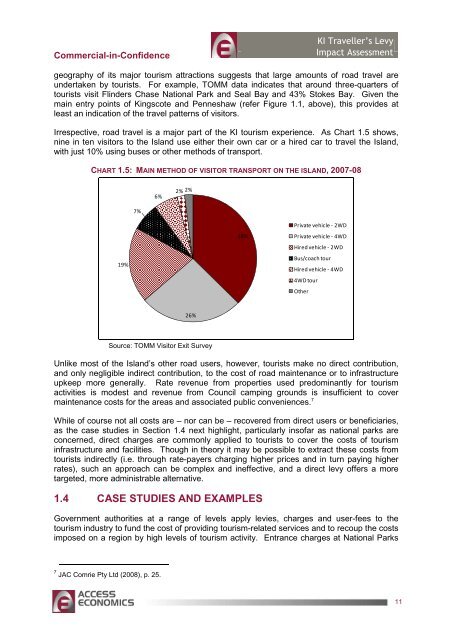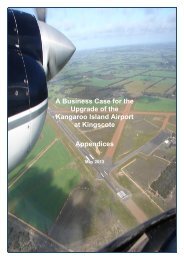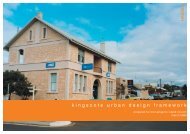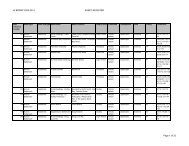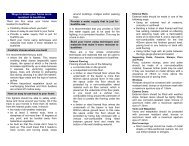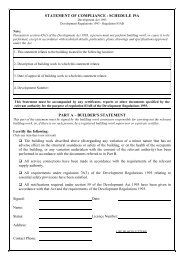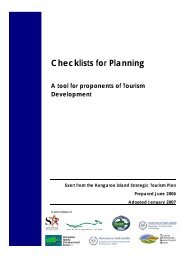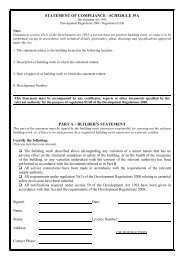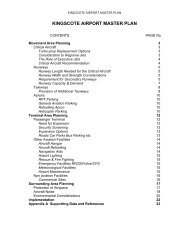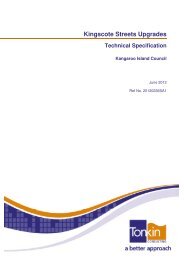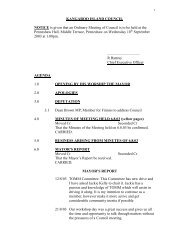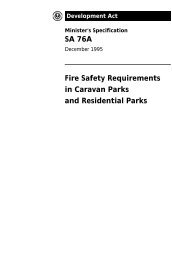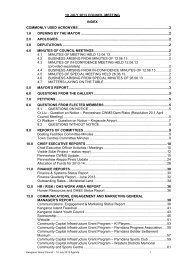KI Traveller's Levy Economic Impact Assessment - Kangaroo Island ...
KI Traveller's Levy Economic Impact Assessment - Kangaroo Island ...
KI Traveller's Levy Economic Impact Assessment - Kangaroo Island ...
Create successful ePaper yourself
Turn your PDF publications into a flip-book with our unique Google optimized e-Paper software.
Commercial-in-Confidence<br />
<strong>KI</strong> Traveller’s <strong>Levy</strong><br />
<strong>Impact</strong> <strong>Assessment</strong><br />
geography of its major tourism attractions suggests that large amounts of road travel are<br />
undertaken by tourists. For example, TOMM data indicates that around three-quarters of<br />
tourists visit Flinders Chase National Park and Seal Bay and 43% Stokes Bay. Given the<br />
main entry points of Kingscote and Penneshaw (refer Figure 1.1, above), this provides at<br />
least an indication of the travel patterns of visitors.<br />
Irrespective, road travel is a major part of the <strong>KI</strong> tourism experience. As Chart 1.5 shows,<br />
nine in ten visitors to the <strong>Island</strong> use either their own car or a hired car to travel the <strong>Island</strong>,<br />
with just 10% using buses or other methods of transport.<br />
CHART 1.5: MAIN METHOD OF VISITOR TRANSPORT ON THE ISLAND, 2007-08<br />
6%<br />
2% 2%<br />
7%<br />
19%<br />
38%<br />
Private vehicle - 2WD<br />
Private vehicle - 4WD<br />
Hired vehicle - 2WD<br />
Bus/coach tour<br />
Hired vehicle - 4WD<br />
4WD tour<br />
Other<br />
26%<br />
Source: TOMM Visitor Exit Survey<br />
Unlike most of the <strong>Island</strong>’s other road users, however, tourists make no direct contribution,<br />
and only negligible indirect contribution, to the cost of road maintenance or to infrastructure<br />
upkeep more generally. Rate revenue from properties used predominantly for tourism<br />
activities is modest and revenue from Council camping grounds is insufficient to cover<br />
maintenance costs for the areas and associated public conveniences. 7<br />
While of course not all costs are – nor can be – recovered from direct users or beneficiaries,<br />
as the case studies in Section 1.4 next highlight, particularly insofar as national parks are<br />
concerned, direct charges are commonly applied to tourists to cover the costs of tourism<br />
infrastructure and facilities. Though in theory it may be possible to extract these costs from<br />
tourists indirectly (i.e. through rate-payers charging higher prices and in turn paying higher<br />
rates), such an approach can be complex and ineffective, and a direct levy offers a more<br />
targeted, more administrable alternative.<br />
1.4 CASE STUDIES AND EXAMPLES<br />
Government authorities at a range of levels apply levies, charges and user-fees to the<br />
tourism industry to fund the cost of providing tourism-related services and to recoup the costs<br />
imposed on a region by high levels of tourism activity. Entrance charges at National Parks<br />
7 JAC Comrie Pty Ltd (2008), p. 25.<br />
11


